5 Types of Cockroaches in Texas
-
Pete Ortiz
- Last updated:
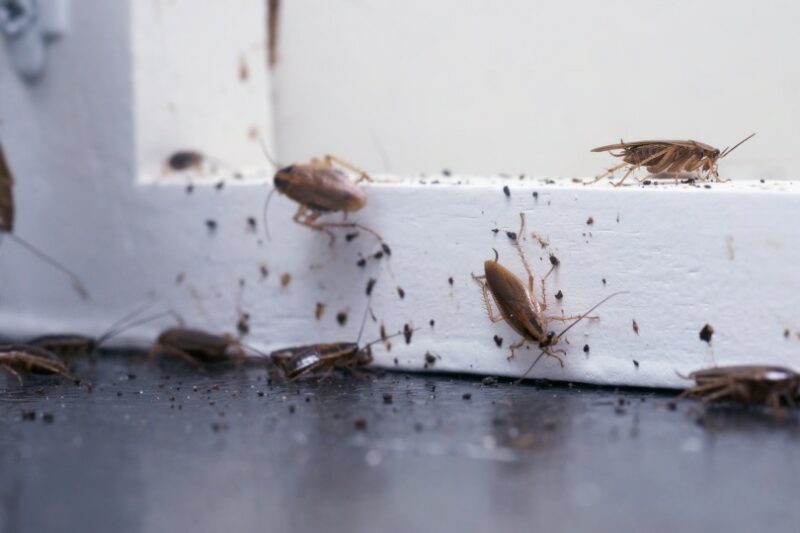
Your conventional scientist will define a roach as any insect that falls in a paraphyletic group (descendants of common ancestry) and belongs to Blattodea (a taxonomic order). But we like to take a different route, which sees them as the only creatures on the planet that can survive a nuclear holocaust!
How many roach species exist in our world? More than 4,000. But fortunately for us in North America, we only have to worry about 55 of them. The rest of the species have populated other continents and are not looking to migrate anytime soon. The other good news is, of the 55 that are found in the United States, only 30 of them are affiliated with human habitats.
We obviously can’t talk about all of them in a single post, so we’re going to focus on the most common ones.
5 Types of Common Roaches in Texas
1. German Cockroach
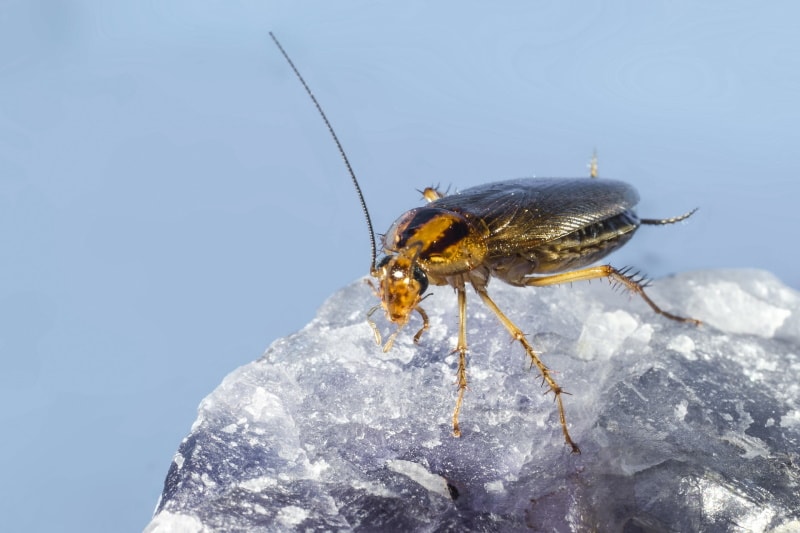
| Color | Light Brown |
| Length | 0.5 Inches |
“German” doesn’t mean that it immigrated from Germany! We refer to it as the German roach simply because the original scientific description came from Germany. In 1796, a scientist who went by the name Pierre Andre Latreille called it the Blattella germanica.
The German roach is the most common cockroach species in our homes. It prefers living indoors rather than outdoors and reproduces unusually faster than all the other species. Yes, they do have wings, but those wings are more like gliders. So, if you’ve seen a roach fly around your home, that’s not a German cockroach.
If we were you, we wouldn’t let this species feel comfortable in our home, seeing as they are known to spread various diseases. Even if you have all your food covered, they’ll still walk on your cutleries and cookware, leaving behind traces of bacteria. Also, they like to shed from time to time and drop egg casings everywhere. These things can easily trigger allergies, or worse, an asthma attack.
They are not that big, compared to others out there—about half an inch long, max. The adults are always light brown, while the juveniles are darker. A juvenile roach is what they typically call a nymph.
2. American Cockroach
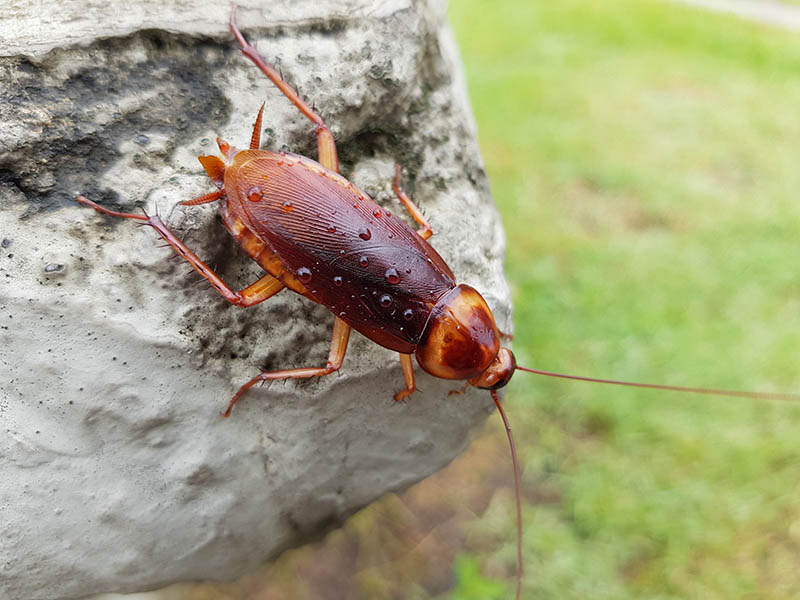
| Color | Reddish-Brown |
| Length | 2 Inches |
The second most abundant roach species in an American household is the American roach. Funny thing is, we call it “American” but it’s native to Africa and the Middle East. From the records that we have, it’s believed that they got here in the 17th century AD, during the period when the Atlantic slave trade was still a thing.
Unlike their German counterparts, the American roach likes to live outdoors. They’ll only come in when they are searching for food or looking for new breeding sites. Should you be worried about them? You definitely should, especially since public health officials have designated them a health hazard.
For some weird reason, they are often drawn to fecal matter and anything that looks toxic to humans. For example, decaying organic matter. You’ll see them feeding on practically anything that nature has to provide, including algae, leaves, fungi, and even other insects.
If you find one in your apartment, there’s a pretty good chance it got in through the sewer system.
They can’t fly, but they are larger than their German peers, as they usually measure 2 inches in length. Both adults and nymphs share the same reddish-brown color, so if you’re trying to distinguish the two, just focus on the size.
The other thing that we noted was that the nymphs tend to mature a lot slower compared to other species. They could even take 400 days to get to adulthood, while some take a couple of months.
3. Oriental Cockroaches
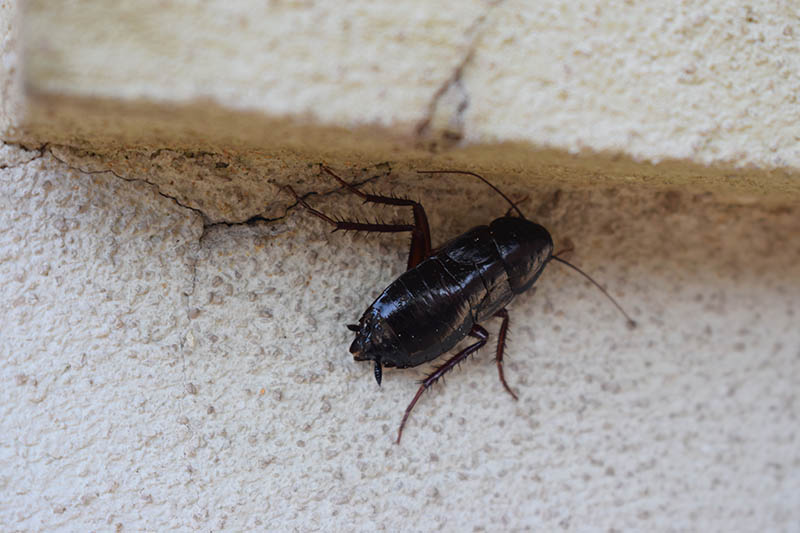
| Color | Black |
| Length | 1 Inch |
The Oriental roach is unofficially called the “Waterbug” or the “Black Roach” in most communities. We’ve dubbed them the “Waterbugs” because they are always found in damp places, and “Black Roaches” since they have darker bodies.
90% of the time, you’ll find the Oriental roach outside. If you see one crawling toward your house, you probably have a variety of different vegetation around your property. This species likes to hang around vegetation that can provide all the essential survival items, including food and shelter.
Oriental roaches are just as nasty as all the other species that we’ve encountered. They’ll feed on any decaying matter, feces, garbage, and almost anything that you could think of. On top of that, since they spend most of their time exploring fecal matter and several other bacteria-laden substances, they stink just like the sewer.
Some people see this as a good thing, as it means that odor will always act as a warning sign that the roach has already contaminated your food or walked all over your cookware.
The Oriental roaches preferred hiding locations are in the garages, beneath appliances, basements, drains, and all the other dark or damp areas.
With regards to size, they fall in between the Germans and the Americans. So, we’d say about an inch in length. Both adults have wings, though those of the female species look a little bit basic. The juveniles are dark brown or black just like the parents but don’t own a pair of wings.
4. Smoky-Brown Cockroach
| Color | Reddish-Brown |
| Length | 1.5 Inches |
The Smoky-Brown species population is mainly concentrated in central Texas. Most of the people who’ve come across them have lived or are living in New Orleans or Houston. “Smoky-Brown” is descriptive of how it looks and the places it likes to hide. It has a mahogany shade, with a body that’s comparatively thinner than most roach species.
The juveniles have the same color, but during the early stages, they sort of look whitish. That’s why it’s easy to spot a nymph as opposed to an adult. This species is usually found in mulch and leaf litter because they know their coloration will camouflage them against predators.
Warm, humid, and wooded are the types of words that we’d typically use to describe their habitats. They are outdoorsy but naturally nocturnal. Don’t bother looking for them in your home, as they prefer hanging out in non-dwelling areas. If they are not present in any mulch, you can find them in tree cavities, gutters, caves, nurseries, etc.
If they want to see what’s going on inside your home, they’ll access it through the vents or plumbing system—but not the sewers. Oh, and by the way, they are normally drawn to lights, are very sensitive to dehydration, and have functional wings.
Come to think of it, they are actually one of the strongest fliers in the roach family.
5. Brown-Banded Cockroach
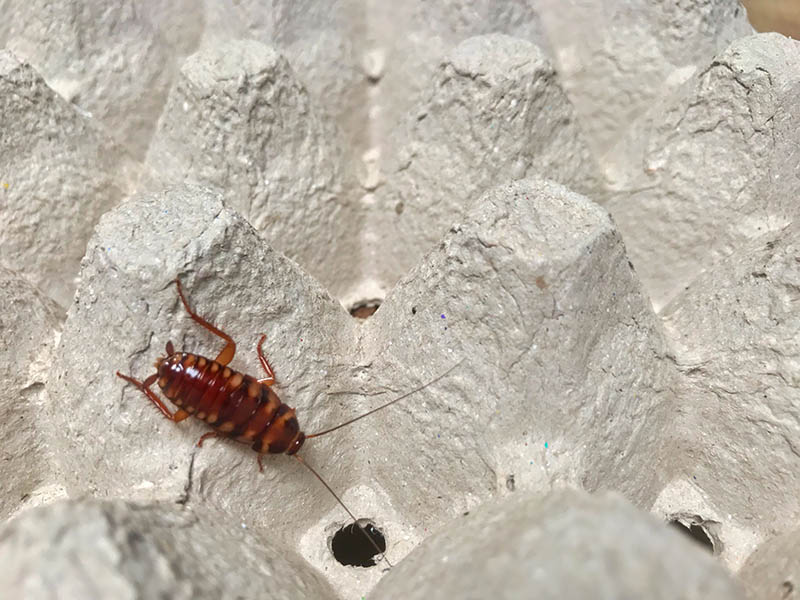
| Color | Dark Brown |
| Length | 0.5 Inches |
These pests have two bands across their bodies that are light brown in color—that’s how they got their name. They’ll invade your indoor space without thinking twice but leave immediately if they spot a German roach. They’ve always been sworn enemies.
The females cannot fly at all (even in the presence of danger) but the males do from time to time. Sometimes they jump, but that’s only if they aren’t being chased by predators. If you look at their diet, you’ll learn that the Brown-Banded species isn’t a picky eater. It will eat anything from human food to garbage and even feces.
Forewarning: fumigate your house periodically if you’re asthmatic and not looking to trigger any allergy. They’ll come in and leave behind egg casings everywhere, as well as old skin.
Generally, they are small roaches. On average, the adults are half an inch in length, but the males are ostensibly longer than the females. What’s more, the gents normally take on a golden-tan shade as they grow older, while the ladies maintain their juvenile dark brown color.
Brown-Banded roaches usually get into homes through shared ducts and piping. And if you’re not living in an apartment, they’ll hitch a ride in your grocery shopping bags or furniture, while you’re moving.
 Frequently Asked Questions
Frequently Asked Questions
What Are the Signs You Have a Roach Infestation?
The good thing about roaches is, they won’t bite or sting you. They’ll even try to avoid your line of sight if they have to. However, that doesn’t negate the fact that they can still damage our personal belongings, contaminate our food, transmit various illnesses, or worsen our allergies.
The first sign is the lingering odor in places that only insects can fit. Especially if that area is dark and damp. Then we have the roaches’ skins. We all know that nymphs tend to molt a couple of times during their maturation process.
Smear marks are also a sign, together with roach feces.
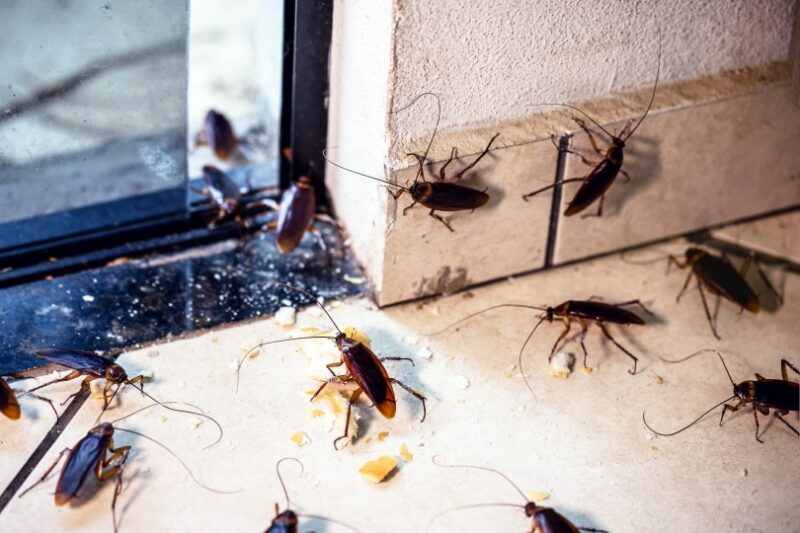
How Do You Prevent a Roach Infestation?
Cockroaches are living organisms. And just like any other living organism, they need food and shelter to survive. So, start by making sure they don’t have access to anything edible in your home. Take out the trash, clean all your counters, wash the dishes, and vacuum your floors.
Once you’re done, make sure all your leftovers are stored in the refrigerator, and all the openings are sealed. If there are any gaps between your doors and frames, use weatherstripping to seal them all.
How Dangerous Are Cockroaches?
Any insect or pest that’s classified as a disease vector should be taken seriously, as it can easily compromise your immune system, hence lowering your defenses. Even without knowing it, these insects always carry around parasites, pathogens, and bacteria, such as salmonella and E. coli.
You’ll keep wondering why you’re constantly vomiting, feeling fatigued, or experiencing stomach pains and cramps, only to realize your meals were contaminated by roaches. While these infections don’t present a serious health risk in the short term, they can still trigger life-threatening complications in the long run.
For instance, E. coli can trigger hemolytic uremic syndrome, which is a known cause of kidney failure.
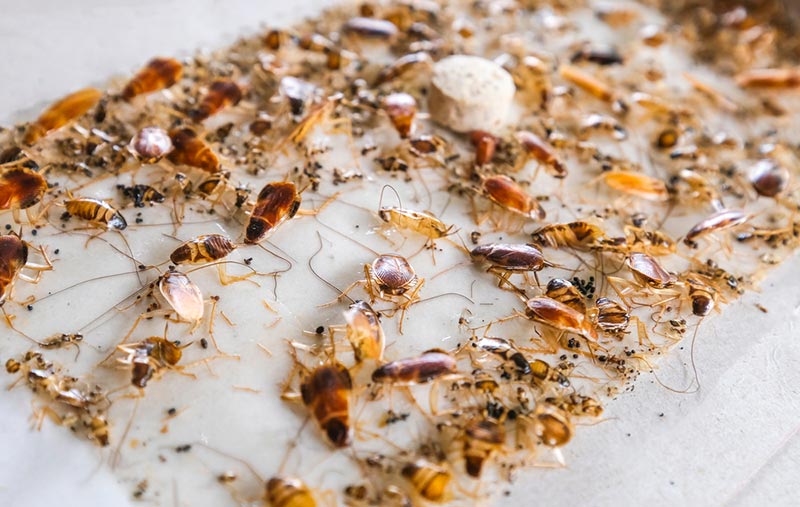
Final Thoughts
Cockroaches are a problem everywhere in the world, and not just in Texas. If you don’t take care of the problem soon enough, taking into account the rate at which they reproduce, that issue will snowball into something much bigger.
Getting rid of a heavy infestation is not only time-consuming but also costly and emotionally taxing. So, remember that the next time you spot a roach passing by.
See also:
Featured Image Credit: IrinaK, Shutterstock
Contents



